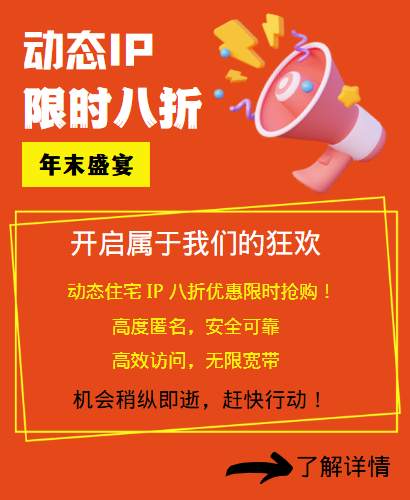SOCKS4 and SOCKS5 are two commonly used network proxy protocols, and there are some key differences between them in terms of functions, performance, and application scenarios. The following is a detailed analysis of the differences between the two protocols:

1. Supported protocol types
SOCKS4: Only supports TCP protocol (Transmission Control Protocol). This means that SOCKS4 proxy can only be used for network applications based on TCP connections, and cannot support applications that need to communicate on UDP protocol (such as online games, voice calls, etc.).
SOCKS5: Not only supports TCP protocol, but also supports UDP protocol (User Datagram Protocol). This makes SOCKS5 proxy more flexible and applicable to a wider range of network application scenarios, including those that require UDP protocol.
2. Authentication mechanism
SOCKS4: SOCKS4 proxy only supports simple username/password authentication when establishing a connection, and this authentication method is usually not mandatory.
SOCKS5: SOCKS5 proxy provides richer authentication options, including no authentication, username/password authentication, and more advanced authentication mechanisms (such as GSS-API, etc.). This flexible authentication mechanism enhances the security of the proxy service and allows users to configure it according to actual needs.
3. Domain Name Resolution Method
SOCKS4: SOCKS4 proxy does not support domain name resolution and can only process IP addresses. This means that when using SOCKS4 proxy, if the target address is a domain name, you need to perform domain name resolution on the client first, and then send the resolved IP address to the proxy server.
SOCKS5: SOCKS5 proxy supports server-side domain name resolution (Domain Name System Resolution on the SOCKS Server), that is, the proxy server can process domain name resolution requests and convert domain names into IP addresses. This method can reduce the burden on the client and improve the efficiency and security of the connection.
4. Performance and Scalability
SOCKS4: Due to its functional and protocol limitations, SOCKS4 proxy may not be as good as SOCKS5 proxy in performance. Especially when dealing with complex network operations and large amounts of data, SOCKS4 proxy may seem overwhelmed.
SOCKS5: SOCKS5 proxy is more superior in performance and supports more functions and scalability. For example, it can better handle network delays, packet loss and other issues, and provide a more stable network connection. In addition, SOCKS5 proxy also supports IPv6 protocol, making it more adaptable in the face of new demands for future Internet development.
5. Security
SOCKS4: Due to the limitations of SOCKS4 proxy in authentication and domain name resolution, its security is relatively low. Especially when processing sensitive data, there may be certain security risks.
SOCKS5: SOCKS5 proxy enhances its security by providing multiple authentication mechanisms, supporting server-side domain name resolution, and higher connection stability. This makes SOCKS5 proxy more advantageous in protecting user privacy and data security.
In summary, SOCKS5 proxy is superior to SOCKS4 proxy in terms of function, performance, security, and scalability. Therefore, in actual applications, users should choose the appropriate proxy protocol according to their needs to protect their privacy and security, and improve the efficiency and stability of network applications.
Related Recommendations
- Say goodbye to IP restrictions: Residential IP purchases and travel around the world
- How the game accelerator works
- Line account registration strategy: Step by step teach you easy
- Analysis of common reasons that lead to frequent proxy IP drops
- Tips for selecting dynamic proxy IP pools: The key to successful crawler
- How effective is the exclusive IP dedicated to FaceBook? How to get it?
- Why does the same proxy IP pool have different effects?
- How to help Telegram's precise community expansion and interaction enhancement
- Facebook Group Marketing Artifact: Proxy IP Switch Identity Batch Group Addition Skills
- Why does the Internet speed slow down after changing the IP

